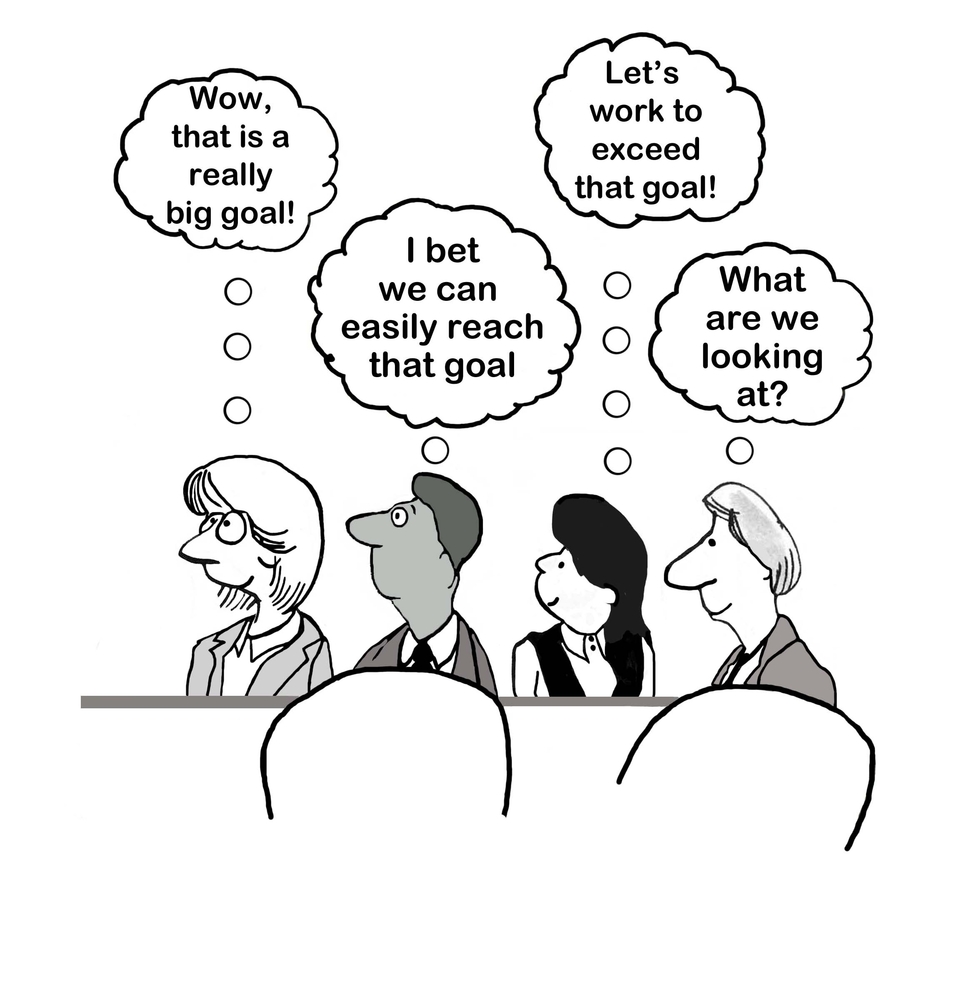
How You Set Goals for a High Performance Culture Matters
Some leaders think they must set goals for a high performance culture that are impossible (or almost impossible) to reach in order to motivate their teams to provide maximum effort and peak performance. Other leaders believe success metrics must be set low enough so that people can consistently exceed expectations without setting themselves up to fail.
We believe that both sets of leaders are wrong.
High Performance Goals Must be “Just Right”
To set goals for a high performance culture, they must be “just right.” Our organizational alignment research combined with twenty-five plus years of helping clients boost their performance tells us that overly ambitious goals discourage rather than encourage greater effort.
Ultra-stretch goals may work for some super-charged salespeople but, in the final analysis, they are counter-productive. The same is true when the bar is set too low.
Impossible to Reach Goals
Here is what happens step-by-step when you regularly set goals that are not achievable.
First, when the targets are not reached, excuses are often made. Whatever the reason for failure — not enough resources, not enough time, or stiff competition — there is usually a lack of accountability either from the leaders who set them, the team that agreed to them, or the people who failed to achieve them.
Second, consistently missing targets sets up a situation where failure becomes the team norm. Either the goals are not thoughtfully chosen, or the team does not do what it commits to doing. The result is often workplace complacency and a low or average performing team where there is minimal accountability and failure is not simply accepted — it is expected.
Sandbagged Goals
When goals are set too low, our experience is that performance is almost always “left on the table.” Sure, some may surpass their targets and exceed expectations, but they rarely perform at their peak.
As stated by Michelangelo: “The greater danger for most of us lies not in setting our aim too high and falling short; but in setting our aim too low, and achieving our mark.”
How to Set Better Goals Going Forward
How can you, instead, build a high performance culture where achievement, not failure, becomes the standard? When you set goals for a high performance culture, you need to:
Only then can you monitor and track progress — both activities are absolutely critical to holding your team accountable and to adjusting as needed, to allow for unforeseen and changing conditions.
You want to encourage greater effort from your team by asking them to “stretch” a little further each goal setting period with fair, accurate, and relevant goals that are “just within reach” if people perform at their peak and get what they need.
The Bottom Line
Your performance culture accounts for almost half of the difference between high and low performance. We believe it is a leader’s job to create the circumstances to consistently get the most out of their people in a way that is consistent with the organization’s core values and strategic direction. If leaders push too much (or even too little), teams may not meet their goals.
To learn more, download How Much a Leader Should Push for Higher Performance -Backed by Research
Explore real world results for clients like you striving to create higher performance